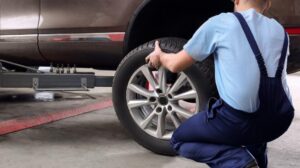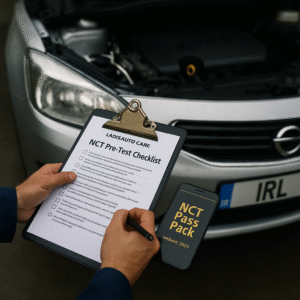Overview
- Symptoms of car radiator leaks
- How to check for radiator and coolant leaks
- Causes of radiator leaks
- How to fix a radiator leak
- Preventive measures and safety tips
Symptoms of Car Radiator Leaks
A leaking radiator can cause your engine to overheat, leading to serious damage. Here are the most common symptoms of a radiator leak:
- Frequent engine overheating
- Puddle underneath the engine
- Rapidly dropping coolant levels
These symptoms indicate coolant leaks. Regularly checking your car radiator’s water and coolant levels can help you detect leaks early.
How to Check for Radiator and Coolant Leaks
To check your car for radiator and coolant leaks:
- Coolant Levels: Check the coolant levels using the visible maximum and minimum level indicators on your cooling system. If levels drop significantly over a short time, there might be a leak.
- Engine Overheating: Keep an eye on the temperature gauge. Frequent overheating can signal a radiator leak.
- Puddles Underneath: Look for puddles under the engine compartment. This is a clear sign of a leak.
- Blue Smoke: If blue smoke is coming from the hood, it usually means oil is leaking into the engine.
- Burning Smell: A strong burning smell while the engine is running indicates a potential oil leak.
For a more detailed diagnosis, visit our Auto Advisor Online tool.
Causes of Radiator Leaks
1. Damaged Oil Filter An oil filter removes impurities from the motor oil. Over time, debris can block the filter, causing it to degrade and leak.
2. Failing Filler Cap A loose or broken oil filler cap can cause leaks. Oil may pool under the vehicle or around the engine.
3. Excess Engine Oil Excessive oil can cause leaks, accompanied by blue smoke and a burning smell.
4. Leaking Oil Pan Gasket The oil pan gasket seals the oil pan to the engine block. Symptoms include oil puddles and low oil levels.
5. Broken Valve Cover Gasket A valve cover gasket that seals the cylinder head can degrade over time, causing leaks from the top of the engine.
How to Fix a Radiator Leak
Materials Needed:
Radiator sealant (temporary fix)New radiator or radiator repair kit (permanent fix)Coolant/antifreezeClean rags or towelsGloves and safety glassesHose clamps and replacement hoses (if necessary)Screwdriver or wrench set.
Temporary Fix with Radiator Sealant:
Cool Down the Engine: Ensure the engine is completely cool.
Locate the Leak: Open the hood and locate the source of the leak.
Clean the Area: Wipe away any dirt or debris around the leak.
Apply Radiator Sealant: Follow the instructions on the sealant product.
Run the Engine: Let the car run for about 10-15 minutes to allow the sealant to circulate.
Check the Leak: After cooling, check if the leak has stopped. If not, a permanent fix is needed.
Permanent Fix:
Cool Down the Engine: Ensure the engine is completely cool.Drain the Coolant: Place a drain pan under the radiator and open the drain valve or remove the lower radiator hose.Remove the Radiator: Disconnect all hoses and lines, and remove the radiator mounting bolts.Inspect and Repair: Use a repair kit for minor damage or replace the radiator if damage is extensive.Reinstall the Radiator: Reconnect all hoses and lines, ensuring all clamps and bolts are tightened.Refill Coolant: Refill the radiator with coolant and bleed any air from the system.Check for Leaks: Start the engine and check for leaks.
Preventive Measures and Safety Tips
- Regular Maintenance: Regularly check coolant levels and inspect the radiator and hoses.
- Use Quality Oil: Use high-quality engine oil suitable for your vehicle’s make and model. For recommendations, use our Auto Advisor tool.
- Inspect Gaskets and Seals: Regularly inspect and replace worn gaskets and seals.
- Monitor Oil Levels: Keep an eye on oil levels and top up as necessary.
Safety First: Always wear gloves and safety glasses when working with coolant. If you’re not confident in performing these repairs, seek professional help.
By following these steps, you can address a radiator leak and keep your car running smoothly. For more personalized advice and instant solutions, visit Auto Advisor Online.





